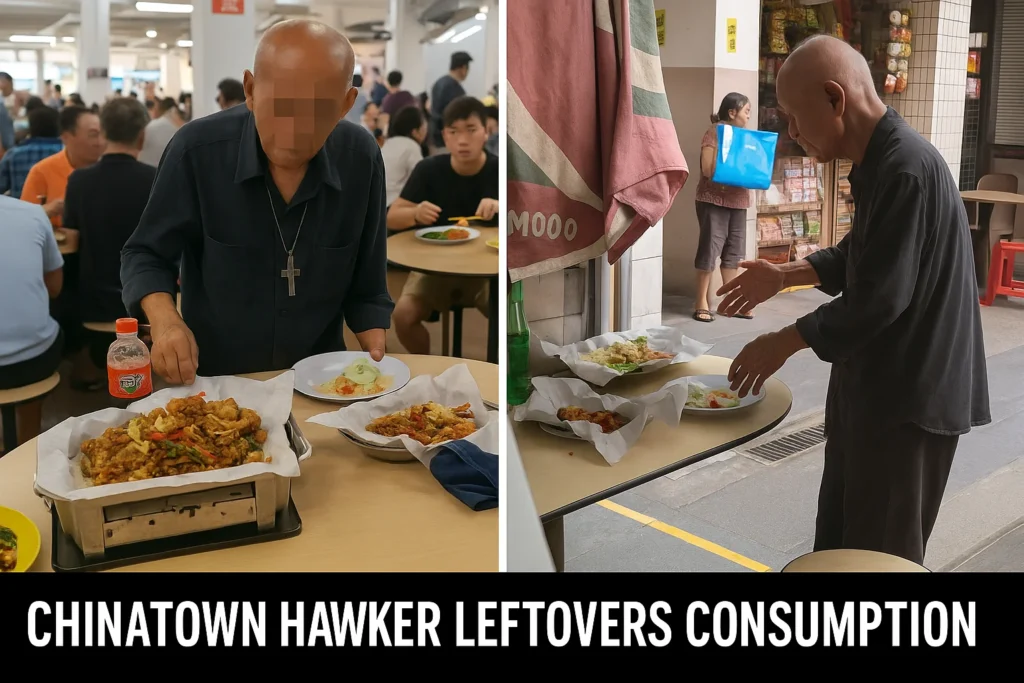Introduction: A Culinary Paradise with a Hidden Question
Chinatown is a vibrant hub of culinary delights—aromatic spices, sizzling woks, and bustling hawker centers greet both locals and travelers with a feast for the senses. But amid the rich food culture, a crucial question arises:
What happens to all the leftovers at these popular food stalls?
Chinatown hawker leftovers consumption raises important considerations about sustainability, food waste, and how we might turn perceived waste into valuable resources. Let’s dive into the heart of this dynamic food scene and explore solutions that benefit both vendors and diners.
The Issue of Food Waste in Hawker Centers
Hawker centers are known for their fast-paced environment and mass food production. However, this efficiency often comes at a cost—significant food waste.
Causes of Food Waste:
- Overproduction: Vendors prepare large quantities to meet unpredictable demand.
- Large Portions: Patrons sometimes order more than they can eat.
- Inventory Challenges: Fast service environments hinder precise food management.
Environmental Impact:
- Leftovers often end up in landfills.
- Decomposing food generates methane, a potent greenhouse gas.
- Waste undermines sustainability efforts in urban communities.
Raising awareness and fostering change is essential for a greener and more responsible food culture.
The Benefits of Consuming Leftovers
Eating leftovers isn’t just practical—it’s environmentally and economically beneficial.
Key Benefits:
- Reduces Food Waste: Less waste means lower environmental impact.
- Saves Money: Fewer trips to the grocery store or hawker stalls.
- Enhances Flavors: Many dishes taste better after marinating overnight.
- Encourages Creativity: Reinvent meals using minimal resources.
- Fosters Gratitude: Promotes a more mindful, appreciative approach to eating.
Different Perspectives on Chinatown Hawker Leftovers
The topic sparks varied reactions—some embrace it, while others raise valid concerns.
Supportive Viewpoints:
- Environmental Advocates: See leftovers as a way to combat food waste and climate change.
- Cultural Embrace: In many cultures, repurposing food is a traditional value reflecting respect and resourcefulness.
- Economic Benefit: Affordable leftover meals can help reduce food insecurity.
Cautious Viewpoints:
- Hygiene Concerns: Questions around freshness and proper storage.
- Perception of Quality: Fear that leftovers might be inferior to freshly cooked meals.
These perspectives highlight the importance of balance, transparency, and education in promoting leftover consumption.
Creative Ways to Repurpose Leftovers
Leftovers can be a blank canvas for culinary innovation.
Easy and Delicious Ideas:
- Fried Rice: Use yesterday’s rice with veggies and eggs for a quick stir-fry.
- Wraps and Salads: Repurpose meats with greens and dressings for a fresh meal.
- Soups and Stews: Add noodles or grains into a comforting broth.
- Omelets and Frittatas: A great way to use up chopped veggies, meats, and cheese.
- Sandwich Fillings: Transform stir-fries or curries into flavorful fillings.
These dishes prove that leftovers can be both exciting and satisfying.
Solutions to Reduce Food Waste in Hawker Centers
Transforming the system requires thoughtful changes across all stakeholders.
Actionable Solutions:
- Pay-as-you-waste Models: Encourage diners to order responsibly.
- Food Donation Programs: Collaborate with local charities to distribute unsold food.
- Smaller Portion Options: Allow sampling without committing to large servings.
- Vendor Education: Train hawkers in inventory and storage management.
- Awareness Campaigns: Highlight the environmental and social cost of food waste.
These strategies help foster a sustainable, community-driven food ecosystem.
Conclusion: Embracing Sustainability in Chinatown’s Culinary Culture
The concept of Chinatown hawker leftovers consumption presents both a challenge and an opportunity. With the right mindset and tools, hawkers and diners can:
- Reduce food waste.
- Save money and resources.
- Encourage sustainability and community involvement.
- Celebrate food heritage through innovative, respectful practices.
By working together—vendors, consumers, and policymakers—we can create a Chinatown where no meal goes to waste, and every bite counts toward a better future.
FAQs About Chinatown Hawker Leftovers Consumption
Are hawker center leftovers safe to eat?
Yes—when properly stored and handled, leftovers can be just as safe and nutritious as fresh food. It’s important to follow food safety guidelines.
Why is leftover consumption important in Chinatown?
It helps reduce food waste, supports sustainability, and allows for more affordable dining options in a culturally rich environment.
How can vendors manage food waste better?
By using portion control, tracking demand, storing ingredients efficiently, and collaborating with food banks or charities.
What dishes are best made from leftovers?
Fried rice, soups, wraps, salads, and omelets are excellent ways to repurpose leftovers creatively and deliciously.
Can leftover consumption become a trend in hawker centers?
Absolutely. With proper education, incentives, and innovative menu options, leftover consumption can become both trendy and socially responsible.






